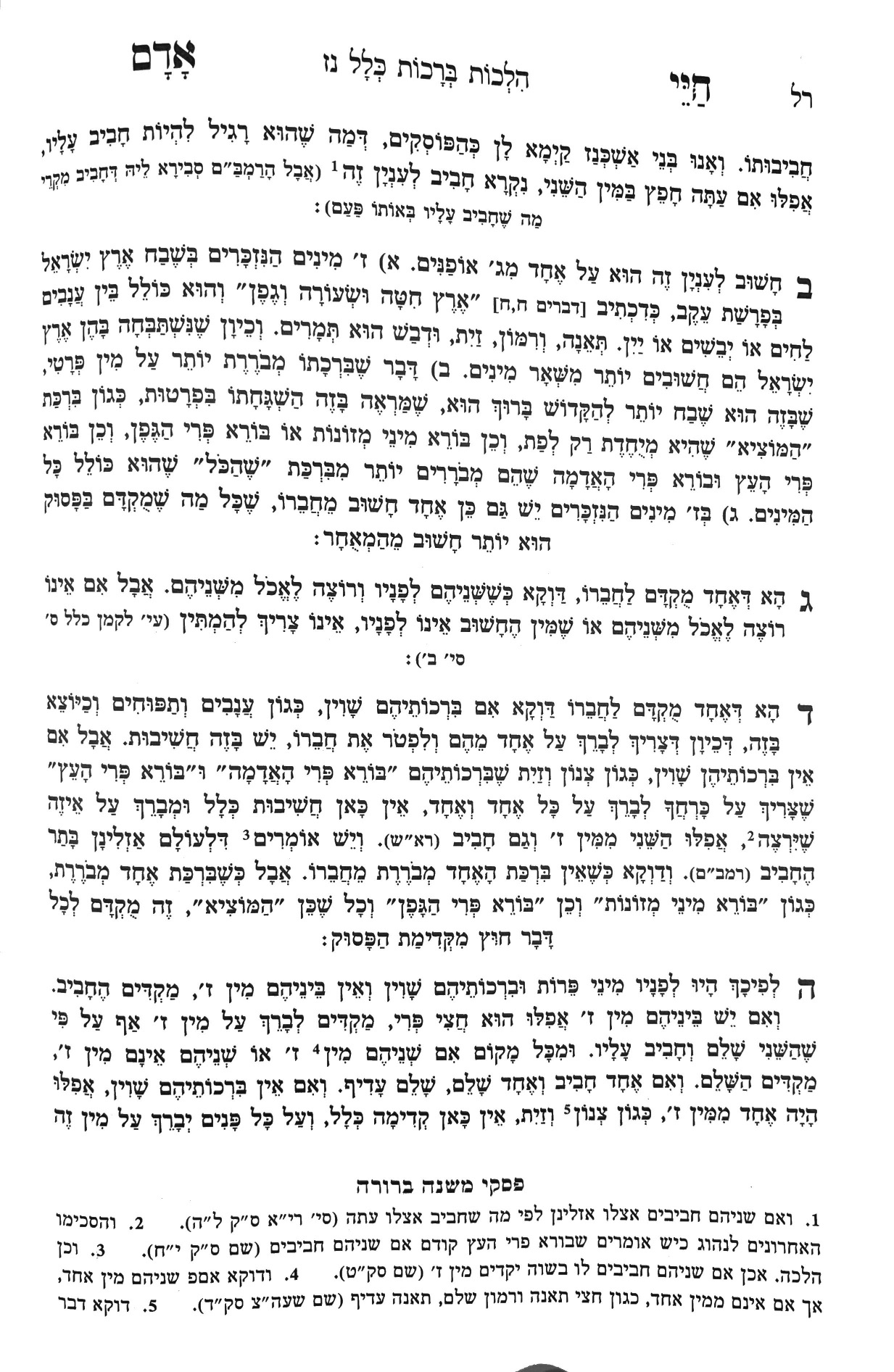We are continuing siman 5. The Chayei Adam discusses a unique scenario of seder brachos between haeitz and haadama.
The Chayei Adam discusses a case of one who has two foods, one which is haeitz and one which is haadama, where the haeitz is generally the chaviv, but at the moment the haadama is chaviv. According to the Rosh, one can do as they wish. According to the Rambam, one should make the bracha on the haadama, as it is the chaviv at this moment. However, we learned that according to the Behag, one should make the bracha on the haeitz, because he holds that haeitz should always precede haadama. The Chayei Adam paskens that one should make the haeitz first.
The Chayei Adam explains that although we have no reason not to follow the Rambam, the Rambam’s understanding of chaviv is not in accordance with the halachic psak of chaviv, because the halacha follows the Rosh’s understanding of chaviv that chaviv refers to the item which is generally chaviv to a person. On the other hand, the opinion of the Behag, that haeitz always precedes haadama, is also not in accordance with the halacha. However, there is a difference between the Rambam and the Behag: the Rambam’s understanding of chaviv is directly against the understanding of the Rosh, and the Rosh is our halachic psak. On the other hand, the Behag’s opinion does not directly contradict any given halachic psakim. Thus, in this case, the Chayei Adam concludes that it makes more sense to follow the Behag rather than the Rambam.
The Mishnah Berurah, in Biur Halacha on siman 211, discusses two more scenarios of seder brachos between haeitz and haadama. In a case where the haadama is generally the chaviv, but at the moment a haeitz of the shivas haminim is more chaviv, the Mishnah Berurah writes to make the bracha on the haeitz. First, the prevailing halachic opinion of the Rosh is that in a case of haeitz and haadama, one may do as they please. However, there is an opinion that in our case, even though there is no precedence between haeitz and haadama, an item which is shivas haminim takes precedence. Additionally, one has the opinions of the Rambam (that chaviv refers to the item which one considers chaviv at the moment) and Behag (that haeitz always precedes haadama) both agreeing to make the bracha on the haeitz first. Thus, adding this combination of opinions together, in addition to the fact that it does not contradict the psak of the Rosh, the Mishnah Berurah writes that one should make haeitz first.
Similarly, in a case where the haadama is generally the chaviv, but at the moment a haeitz is more chaviv and is not of the shivas haminim, according to the Rosh one may do as they please. According to the Rambam, one should make the bracha on the chaviv of the moment (i.e., the haeitz), and according to the Behag, one should also make the bracha on the haeitz. Thus, in this situation, the Mishnah Berurah also writes that one should also make the bracha on the haeitz first.
In conclusion, although haeitz does not generally precede haadama, and we would rather instruct one to precede the item which is chaviv on a general basis (in accordance with the Rosh), if there is a good argument to employ the form of chaviv of the Rambam, we will join it together with the opinion of the Behag and instruct one to make the bracha on the haeitz, and not on the item which is generally chaviv.
Summary
In a case of two foods, one of which is haeitz, and one of which is haadama:
-
Generally, one should make the bracha on the item which is chaviv to them on a general basis (the opinion of the Rosh).
-
If neither item is chaviv on a general basis, one should make the bracha on the item which is chaviv to them at the moment (the opinion of the Rambam).
-
-
If the haeitz is generally the chaviv, but at the moment the haadama is chaviv, one should first make a bracha on the haeitz.
-
If the haadama is generally the chaviv, but at the moment the haeitz is more chaviv, one should first make a bracha on the haeitz, even if the haadama is of the shivas haminim.



